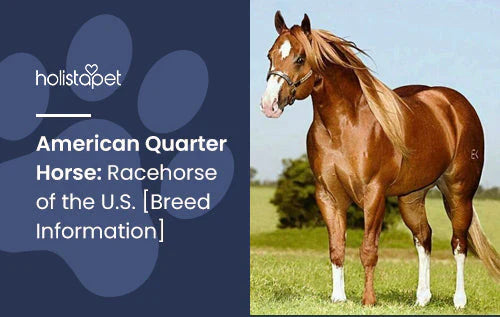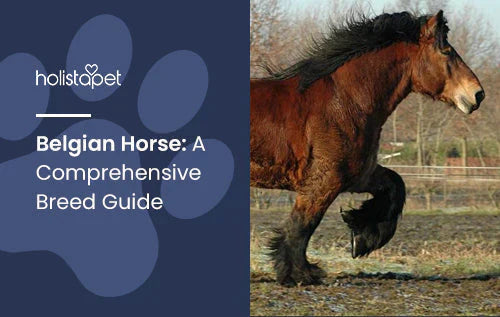The Dutch Warmblood horse is one of the most successful show breeds in the world. Since emerging from its native Dutch lands, this athletic horse has had a rich history, from dressage horses to show-jumping to casual riding. They are a fairly modern horse breed that has risen to greatness and fame in the equestrian world internationally.
Dutch Warmblood Horse Characteristics
Dutch horses have powerful, athletic, and elegant bodies. Breeders have refined them over generations with strict selection procedures. The "warmblood" type of horse breed describes equines that have characteristics of both hot and cold-blooded breeds. Hot-blooded horses are light, fast, and often temperamental racehorses.
Dutch Warmblood Horse Size
The average Dutch Warmblood stallion stands 15-17 hands (60-68 inches) tall and weighs 1,430 pounds. These horses have to meet strict physical requirements if they are to be used for breeding. Mares under 15.5 hands (62 inches) tall and stallions under 15.75 hands (63 inches) don't qualify for breeding.
Dutch Warmblood Horse Personality
The Warmblood type of horse has a calm, balanced temperament. The strict breed standard for Dutch Warm bloods not only demands particular physical requirements. The horse must also possess a high level of ambition, intelligence, and personality.
For example, the breeding requirements for the temperament of Dutch Warmbloods that compete in dressage are:
- Of willing, hardworking, and honest character
- Willing to perform
- Easy to handle
- Quick to react to aids
Dutch Warmblood History
Dutch Warmbloods hail from the Netherlands, though they were not the steeds of choice before World War II. The two native Dutch breeds of choice for farm work were the Gelderlander and Groningen. Separate equine registries regulated each horse.
After the war, people bred horses for luxury more than work, so Dutch Warmblood breeding became a thing. The two registries that looked over the Gelderlander and the Groningen also combined. They formed the Koninklijk Warmbloed Paardenstamboek Nederland. This translates to the Royal Warmblood Horse Studbook of the Netherlands.
The Dutch Warm blood quickly showed that it could excel as a sport horse. The official breed organization for Dutch Warm bloods has four sections — the Gelderlander, the Dutch Harness Horse, dressage, and show-jumping horses. These horses have not had as long a history as other breeds. Since they're relatively new, the studbook for Dutch Warm bloods is open.

How to Care for a Dutch Warm blood
Proper care is vital for horses, whether they be a sport horse or used for pleasure riding. High-quality hay, appropriate exercise, and regular grooming are necessary for horses of every use. Your horse doesn't have to be a world champion for you to treat them like one!
Dutch Warmblood Horse Training
The official Dutch Warmblood registry makes it easy for owners to train their horses based on what type of sport or event they compete in. Head over to KWPN's breed standard page for more information on what kind of training best suits your horse's form and character.
Dressage Warmbloods should have a four-beat walk, a two-beat trot, and a three-beat canter. They should also be able to lengthen and shorten their strides easily. On the other hand, a harness horse does not need a two-beat trot or a three-beat canter. Jumping horses need to regularly maintain a horizontal body, which other show horses do not need.
Dutch Warm bloods of any sport should be successful in self-carriage. This refers to a well-balanced and smooth ride without any interference from the rider. Self-carriage is present in horses that are emotionally, mentally, and physically in tune, and it is a crucial skill for any sport horse to have.
Nutrition and Feeding for Dutch Warmblood Horse
Dutch Warmbloods require around 1-2% of their body weight in hay every day. You can introduce grains, fruits, and veggies as needed, though you should consider the specific conformation standards. Balancer pellets provide protein, vitamins, and minerals. These pellets ensure the horse is getting its exact nutritional requirements.
Related: What Do Horses Eat? Top Feeding Guide for Healthy Horses
Coat Color And Grooming
Dutch Warm blood horse colors are typically black, brown, bay, mahogany-bay, chestnut, or grey. Tobiano coat patterns exist in this breed, though only due to a single stallion. Breeders haven't used any other Dutch Warm blood stallions with a tobiano coat pattern. White markings are common and usually found on the legs and face.
To groom your horse, first hose them down after training or a hard day of work. This practice reduces the number of flies that are attracted to the animal's sweat. Next, check their horseshoes and hooves for rocks, dirt, and other debris that may have gotten stuck in their feet. Use an equine shampoo and a rubber scrubbing mitt to clean their bodies (up to the neck). Use a washcloth or facial brush past the neck. Search for any eye deformations, as these may disqualify your Dutch Warm blood from breeding.

Dutch Warmblood Horse Health Problems
Through generations of selective breeding, Dutch Warmbloods have developed strong and resilient bodies. A horse registered with the studbook must adhere to the strict breed standards. Dutch Warm bloods may be disqualified from breeding if they have congenital eye defects, overbites, or underbites.
Additionally, these horses cannot breed if they have asymmetrical legs, hooves, hocks, or movement. These issues are often aesthetic and do not impact the daily wellbeing or comfort of the horse. Asymmetry or an underbite might affect your studbook standing but are not severe health issues.
Arthritis
Also referred to as osteoarthritis and degenerative joint disease, arthritis is common in many animals. This condition is caused by inflammation of joint tissues, and it takes years to develop. Symptoms of arthritis include lameness, stiffness, joint swelling, and warm joints. To prevent arthritis, ensure your horse performs warm-up and cool-down exercises before and after training. Also, watch the animal's weight, and avoid riding them over hard or pitted surfaces for long periods.
Osteochondritis Dissecans
Osteochondritis dissecans (OCD) is of particular concern in younger Warmbloods. OCD is a growth-related condition that hinders the growth of cartilage, which connects joints. This stunted growth can result in lameness or restricted joint movement if not properly treated.
How to Get a Dutch Warmblood Horse
You can find Dutch Warmblood horses on EquineNow. They are often expensive due to their rigorous, selective breeding and the fact that Warmbloods, in general, are incredibly versatile horses. Dutch Warm blood horses should be registered with a horse organization. Registries ensure owners that the horse's lineage will be recorded and also documents offspring and preserves the general wellbeing of the breed.
Registries are also referred to as "studbooks." The official organization for this breed is the Dutch Warmblood Studbook in North America. The studbook is also referred to as the Royal Warmblood Studbook of the Netherlands (KWPN) of North America. Registering your horse with the KWPN also puts you into contact with other equestrians.
You can find Dutch Warmbloods for under $1,000, but you can expect to spend around $10,000-$20,000 on a high-quality steed. If breeding is your aim, a Dutch Warm blood stallion or mare can cost as much as $135,000!

Final Thoughts
The Dutch Warm blood excels as a powerful sport horse and possesses a calm and dedicated temperament. Perhaps its Netherlands ancestors, the Gelderlander and Groningen, gave this steed such a talented, well-balanced physicality and personality. However you use your horse, the Dutch Warmblood has something to offer every equestrian!







![Probiotics For Dogs [Soft Chews] - HolistaPet](http://www.holistapet.com/cdn/shop/files/Probiotic-Infographic-1_472d7a29-e30c-435a-9638-1365d8c3a9f9.jpg?v=1725384841&width=104)



























Leave a comment
All comments are moderated before being published.
This site is protected by hCaptcha and the hCaptcha Privacy Policy and Terms of Service apply.